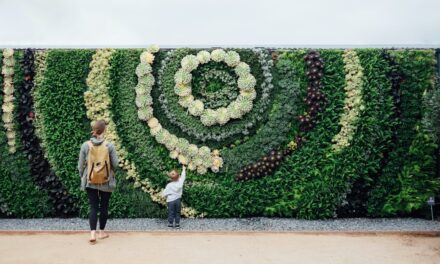The life of the Spanish sculptor Juan Martínez Montañés, born in 1568 in the city of Seville, is a fascinating tale that intertwines with the rich tapestry of the Spanish Baroque period. Montañés was born into a family of artisans, which undoubtedly influenced his early exposure to the world of craftsmanship and artistry. His father, a carpenter, provided him with a foundation in the practical skills necessary for sculpting, while his mother’s nurturing environment fostered his artistic inclinations.
As a young boy, Montañés displayed an innate talent for drawing and carving, which led him to pursue formal training in the arts. Montañés’s education was marked by his apprenticeship under the renowned sculptor, Francisco de Ocampo. This period was crucial for his development as an artist, as he honed his skills in wood carving and gained insights into the techniques of the time.
Ocampo’s workshop was a hub of creativity, where Montañés was exposed to various artistic styles and methods. His formative years were spent absorbing the influences of Mannerism and early Baroque art, which would later inform his distinctive style. By the time he completed his apprenticeship, Montañés had established himself as a promising talent in Seville’s burgeoning art scene.
Summary
- Montañés was born in 1568 in Spain and received his early education in Seville, where he later established himself as a prominent sculptor.
- Influenced by the works of Michelangelo and the Italian Renaissance, Montañés developed a distinctive style characterized by naturalism and emotional expression.
- Known for his use of polychrome and intricate detailing, Montañés’ sculptures, such as the Christ of Clemency and the Immaculate Conception, are considered masterpieces of Spanish Baroque art.
- Montañés’ impact on Spanish Baroque art is evident in his portrayal of religious subjects with a sense of realism and human emotion, setting a new standard for sculptors of his time.
- Montañés’ legacy continues to influence later artists, and his works are celebrated for their contribution to the development of Spanish Baroque art.
Influences and Inspirations
The Influence of the Counter-Reformation
The Counter-Reformation played a pivotal role in influencing his work, as the Catholic Church sought to inspire devotion through art. Montañés found inspiration in the spiritual fervour of this period, which encouraged artists to create works that evoked emotional responses and conveyed religious narratives.
The Resonance of Baroque Art
The dramatic intensity and emotional depth characteristic of Baroque art resonated deeply with him, leading him to explore themes of piety and devotion in his sculptures. In addition to religious influences, Montañés was inspired by the works of other prominent artists of his time.
A Fusion of Influences
The grandeur of Italian Baroque sculptors such as Gian Lorenzo Bernini and Alessandro Algardi left an indelible mark on his artistic sensibilities. He admired their ability to infuse life into stone and wood, creating figures that seemed to breathe with emotion. Montañés also drew inspiration from local traditions and the rich iconography of Andalusian culture, blending these elements into his own unique style. This fusion of influences allowed him to create works that were not only technically proficient but also deeply resonant with the spiritual and cultural ethos of his time.
Style and Techniques
Montañés’s style is often characterised by its exquisite detail and emotional expressiveness. His mastery of wood carving is particularly noteworthy; he employed techniques that allowed him to achieve a remarkable level of realism in his figures. The smoothness of his surfaces, combined with intricate detailing, created a lifelike quality that captivated viewers.
He often used polychromy to enhance the visual impact of his sculptures, applying layers of paint to mimic the appearance of flesh and fabric. This technique added depth and vibrancy to his works, making them appear almost three-dimensional. In terms of composition, Montañés frequently employed dynamic poses and dramatic gestures that conveyed a sense of movement and emotion.
His figures often exhibit a tension between serenity and turmoil, reflecting the complex human experience. The drapery in his sculptures is particularly notable; he skillfully rendered flowing garments that seemed to ripple with movement, further enhancing the sense of life within his creations. Montañés’s ability to balance realism with idealism allowed him to create works that were both relatable and aspirational, appealing to the spiritual aspirations of his audience.
Notable Works and Commissions
Among Montañés’s most celebrated works is the stunning sculpture of “Christ of the Good Death,” created for the Brotherhood of the Holy Burial in Seville. This piece exemplifies his ability to convey profound emotion through sculptural form. The figure of Christ is depicted with an expression of serene resignation, capturing the essence of sacrifice and redemption.
The intricate detailing in the drapery and the lifelike rendering of Christ’s features demonstrate Montañés’s technical prowess and deep understanding of human anatomy. Another significant commission was the “Virgin Mary with Child,” which showcases Montañés’s skill in portraying maternal tenderness. The gentle expression on Mary’s face and the delicate pose of the child evoke a sense of warmth and compassion.
This work not only reflects Montañés’s artistic abilities but also highlights the importance of religious themes in his oeuvre. His sculptures were often commissioned for churches and religious institutions, where they served as focal points for worship and contemplation.
Impact on Spanish Baroque Art
Montañés’s contributions to Spanish Baroque art cannot be overstated. He played a crucial role in shaping the sculptural landscape of 17th-century Spain, influencing both contemporaries and future generations of artists. His ability to blend realism with emotional depth set a new standard for religious sculpture during this period.
Montañés’s works were not merely decorative; they were imbued with spiritual significance, inviting viewers to engage with profound themes of faith and devotion. His impact extended beyond Seville; Montañés’s style resonated throughout Spain and even influenced artists in other parts of Europe. His innovative techniques and emotive expressions inspired a wave of sculptors who sought to emulate his mastery.
The legacy of Montañés can be seen in the works of later artists such as Pedro de Mena and Francisco Salzillo, who adopted elements of his style while infusing their own interpretations. In this way, Montañés helped to lay the groundwork for the evolution of Baroque sculpture in Spain.
Legacy and Influence on Later Artists
Influence on Subsequent Generations
The influence he wielded over subsequent generations is profound; many artists looked to Montañés as a source of inspiration when developing their own styles.
Realism and Emotional Expression
In particular, Montañés’s emphasis on realism and emotional expression can be seen in the works of later Spanish sculptors who sought to capture the human experience in their art. His ability to convey complex emotions through sculptural form paved the way for a more expressive approach to sculpture that would characterise later Baroque art.
A Lasting Impact on Artistic Development
As artists continued to explore themes of spirituality and human emotion, they often returned to Montañés’s work as a touchstone for their own creative endeavours.
Personal Life and Relationships
While much is known about Montañés’s professional achievements, details about his personal life remain somewhat elusive. He married María de la Cruz, with whom he had several children; however, records about their family life are sparse. It is believed that Montañés maintained a close-knit family unit that supported his artistic pursuits.
His relationships with fellow artists also played a significant role in shaping his career; he was part of a vibrant community of craftsmen in Seville that fostered collaboration and exchange. Montañés’s friendships with other artists provided him with opportunities for growth and experimentation. He was known to engage in discussions about artistic techniques and philosophies with contemporaries, which enriched his understanding of art.
These relationships not only influenced his work but also contributed to the development of a supportive artistic environment in Seville during a time when Baroque art was flourishing.
Religious and Political Context of Montañés’ Work
The religious fervour that characterised 17th-century Spain had a profound impact on Montañés’s work. The Counter-Reformation prompted a renewed emphasis on religious themes in art, as the Catholic Church sought to inspire devotion among its followers through visual narratives. Montañés’s sculptures often reflected this context, embodying themes of sacrifice, redemption, and divine grace that resonated deeply with contemporary audiences.
Politically, Spain was undergoing significant changes during Montañés’s lifetime, marked by both internal strife and external conflicts. The Habsburg monarchy faced challenges that affected all aspects of society, including art. In this climate, Montañés’s work served not only as expressions of faith but also as reflections on the human condition amidst turmoil.
His sculptures provided solace and inspiration during uncertain times, reinforcing the role of art as a means of spiritual reflection.
Critical Reception and Controversies
Montañés’s work received considerable acclaim during his lifetime, earning him recognition as one of Spain’s foremost sculptors. His ability to convey deep emotion through wood carving garnered praise from both patrons and critics alike. However, like many artists, he faced challenges related to competition within the vibrant artistic community of Seville.
Some contemporaries questioned his techniques or sought to differentiate their own styles from his established reputation. Despite any controversies surrounding his work, Montañés’s legacy has endured over time. Art historians have continued to study his contributions to Baroque sculpture, recognising him as a pivotal figure whose influence extended far beyond his immediate circle.
The critical reception of his work has evolved over centuries; what may have been contentious during his lifetime is now celebrated as part of Spain’s rich artistic heritage.
Preservation and Restoration of Montañés’ Art
The preservation and restoration of Montañés’s sculptures have become essential endeavours for art historians and conservators alike. Many of his works have endured centuries of wear due to environmental factors or neglect; thus, careful restoration efforts are necessary to maintain their integrity for future generations. These efforts involve meticulous examination and treatment processes aimed at preserving both the physical structure and aesthetic qualities of his sculptures.
Institutions dedicated to preserving Spanish Baroque art have undertaken significant restoration projects focused on Montañés’s works. These initiatives not only aim to restore physical damage but also seek to enhance public appreciation for his contributions to art history. By ensuring that Montañés’s masterpieces remain accessible to contemporary audiences, these efforts help keep alive the spirit of creativity that defined his era.
Celebrating Montañés’ Contributions to Art
Juan Martínez Montañés stands as a towering figure in Spanish Baroque art whose contributions continue to resonate today. His ability to blend technical mastery with emotional depth has left an indelible mark on the world of sculpture, inspiring countless artists across generations. Celebrating Montañés involves recognising not only his artistic achievements but also understanding the cultural context that shaped his work.
Exhibitions dedicated to Montañés’s sculptures provide opportunities for audiences to engage with his artistry firsthand while fostering appreciation for Spain’s rich artistic heritage. Through educational programmes and scholarly research, institutions continue to explore his legacy, ensuring that future generations understand the significance of this remarkable artist within the broader narrative of art history. In doing so, they honour not only Montañés himself but also the enduring power of art as a means of expression and connection across time.
For those interested in exploring different art forms, a fascinating article to read is Copperplate Calligraphy: Historical Style Fundamentals. This article delves into the intricate world of calligraphy, providing insights into the historical significance and fundamental techniques of this art form. It offers a unique perspective on the beauty and complexity of calligraphy, making it a must-read for art enthusiasts looking to expand their knowledge and appreciation of different artistic styles.



